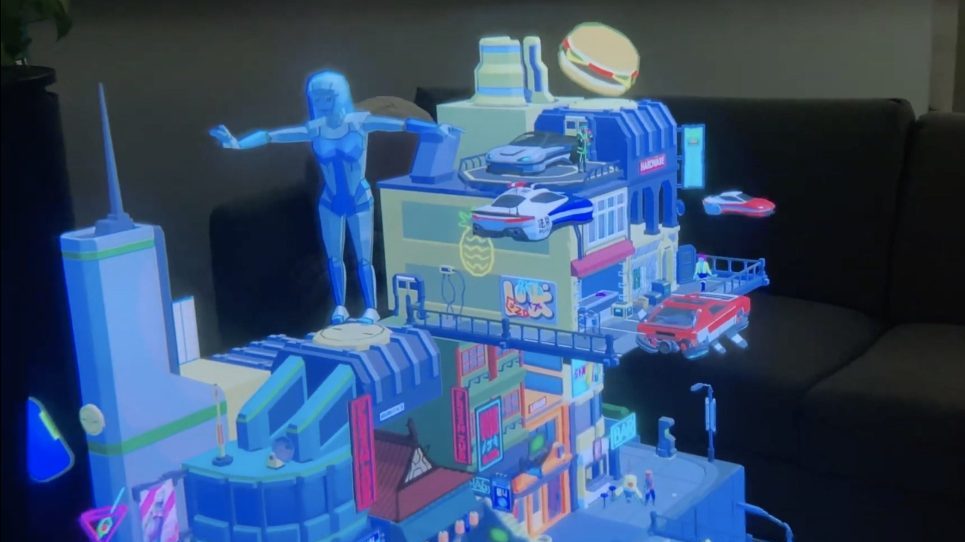Qualcomm wants to use the power of 5G to deliver VR and AR to your XR glasses.
With 5G networks promising reduced latency, higher system capacity, and massive device connectivity, Qualcomm is pursuing the development of a smart phone-powered 5G “XR viewers” – a unique headset device capable of delivering both VR and AR experiences.
Qualcomm, who unveiled their plans during the 2019 Mobile World Congress in Barcelona, said the “XR viewers” would use their Snapdragon 855 – a processor designed specifically for 5G phones – to carry the load of the 5G network and computing power on a smart phone device; The AR/VR experiences would then be delivered to your glasses through a USB Type-C cable.
All four major U.S. carriers – AT&T, Sprint, T-Mobile, and Verizon are all thrilled about what 5G will mean for their customers and the potential impact the technology could have on how we work, relax, and learn.

Qualcomm XR Viewer / Image Credit: Qualcom
AT&T has already rolled out their 5G network in December, while Verizon has been touring the country with their cool matte black Verizon 5G Bus promoting all possibilities of a blazing fast future of wireless technology.
In an interview with VRScout, Fraser G. Bowie, Sr Manager of AR/VR for Global Learning & Development at Verizon and a leader in AR and VR for the enterprise, said, “5G will enable AR and VR devices to access more information faster than ever before at speeds that will make it seem seamless to the user.” Bowie adds, “This will allow the worker to get instant feedback and content about the surrounding environment, helping them identify problems and work more efficiently and effectively.”
Current AR glasses, such as Microsoft’s HoloLens 2 and the Magic Leap One, can pack a lot of punch in terms of augmented reality. Unfortunately, they’re not the most stylish headsets around. They look cool, tech-wise, but you’re not going to wear these out to parties or a dinner event anytime soon. Like many fledgling technologies, these devices focus on practical functionality, rather than aesthetic appeal.

Qualcomm Snapdragon / Image Credit: Qualcomm
AR headsets such as Vuzix (Blade) and nReal (Light) on the other hand have less hardware built into the glasses so they can look more similar to an actual pair of stylish glasses – putting fashion before function. Compared side-by-side to the HoloLens or a Magic Leap One, the differences in power are significant.
Qualcomm’s tethered 5G solution would give devices such as the Vuzix or nReal glasses more AR power, creating a powerful XR headset that would deliver Magic Leap-level AR and VR without sacrificing style.
In an interview with Venture Beat, Hugo Swart, senior director of product management at Qualcomm said, “Our HMD Accelerator Program has been a critical catalyst for ecosystem partners ranging from component suppliers to ODMs, to bring quality standalone XR headsets to consumers,” adding “, we are working toward the common goal of transforming how the world connects and communicates by offering premium, immersive experiences over 5G.”
Qualcomm’s Snapdragon 855 was built for speed, outpacing not only the Snapdragon 850 featured in HoloLens 2, but the upcoming Oculus Quest and its Snapdragon 835 as well.
“Adding 5G will be a game changer for these devices. Not only will they be smaller and faster. The devices will be able to offer more seamless integration with the environment they are in. This will help spread adoption,” said Bowie.
With Qualcomm at the helm, the future of mobile VR & AR is looking fast…and stylish.
The post Qualcomm Announces 5G Support For XR Viewers appeared first on VRScout.
from VRScout https://ift.tt/2VxlntT
via IFTTT
No comments:
Post a Comment